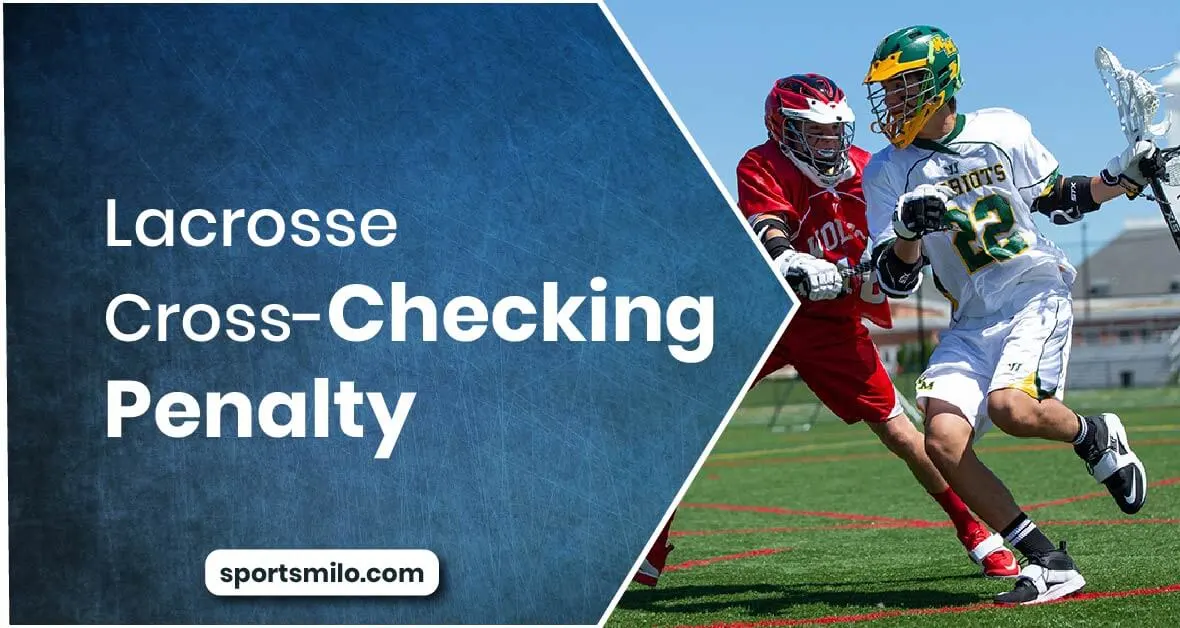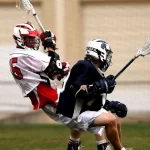A cross-check in lacrosse is when a player uses the shaft of their lacrosse stick to strike an opponent. This is considered a personal foul and will result in a penalty.
whenever a referee believes that a player’s safety is in danger, he or she will enforce the cross-checking penalty. A foul occurs when an opponent extends the shaft of their stick into someone running toward them. Whether a call is made depends on where the impact occurred and the referee’s discretion.
Lacrosse Cross-Checking Penalty
Definition
According to NCAA Men’s Lacrosse rules, cross-checking definitions vary by league and level of play. The foul occurs when the player’s hands are wide apart on the stick and the player hits the opposing player with the middle of his shaft.
Players who use their middle shaft to thrust or extend away from their body to hit their opponents are considered to commit a check pursuant to NFHS and Youth Lacrosse rules.
It is a dead giveaway for referees to make the call if the cross-section of the shaft extends into the opponent. Referees are only penalized if they witness the rule-breaking first-hand.
The offending player will receive a personal foul if the foul is observed by the referee. According to the severity of the offense, the player who performed the illegal cross-check may receive a one- to three-minute penalty or even be ejected.
Result
In most leagues, cross-checking penalties result in personal fouls for the offending player. For a high school lacrosse foul, the penalty box usually lasts between one and three minutes.
There is a stricter enforcement policy in the NCAA, which can result in players being ejected and suspended from games. Box lacrosse is the only league that formally recognizes cross-checking.
Referee Signal
Referees throw penalty flags when they witness a player cross-check and wait until a loose ball or change of possession occurs before stopping play.
In imitation of cross-checking, they push their arms straight in and out while holding closed fists to signal the penalty. Depending on the level of the transgression, the referee will assess the player’s personal foul and announce the punishment.
Examples
- When defenders thrust their sticks illegally into opposing attackers, they hit their heads.
- While playing defense on another player, the shaft of the stick is the first point of contact.
- An aggressive or dangerous player levels an opponent with their stick’s cross-section.
Similar Penalties to Cross-Checking
- Body-check
- Unnecessary Roughness
- Disrespectful behavior
- The target
FAQ of Lacrosse Cross-Checking Penalty
As cross-checking is performed with your hands spread apart, you extend the cross-section of the shaft into an opponent in order to impede their movement.
In this penalty, a player is penalized for not using the stick correctly, resulting in the potential for danger or injury to other opposing players. At different levels of play, referees will determine what constitutes cross-checking and what does not.
Different leagues and levels of play impose different penalties for cross-checking. The player who performed the cross-check is penalized between 1-3 minutes for the action in most recognized leagues. When the action is violent and dangerous enough, some leagues may even eject the player; this is determined by the referee.
Despite similarities, body-checking is different from cross-checking. An opponent’s ball can be taken away from them by body-checking with the player’s body. The referee’s judgment can be ambiguous if it is deemed a foul if performed in a dangerous manner, as with cross-checking. In body-checking, instead of concentrating on the point of contact between a stick and an opponent, as in cross-checking, the point of contact is shoulder-to-shoulder.




